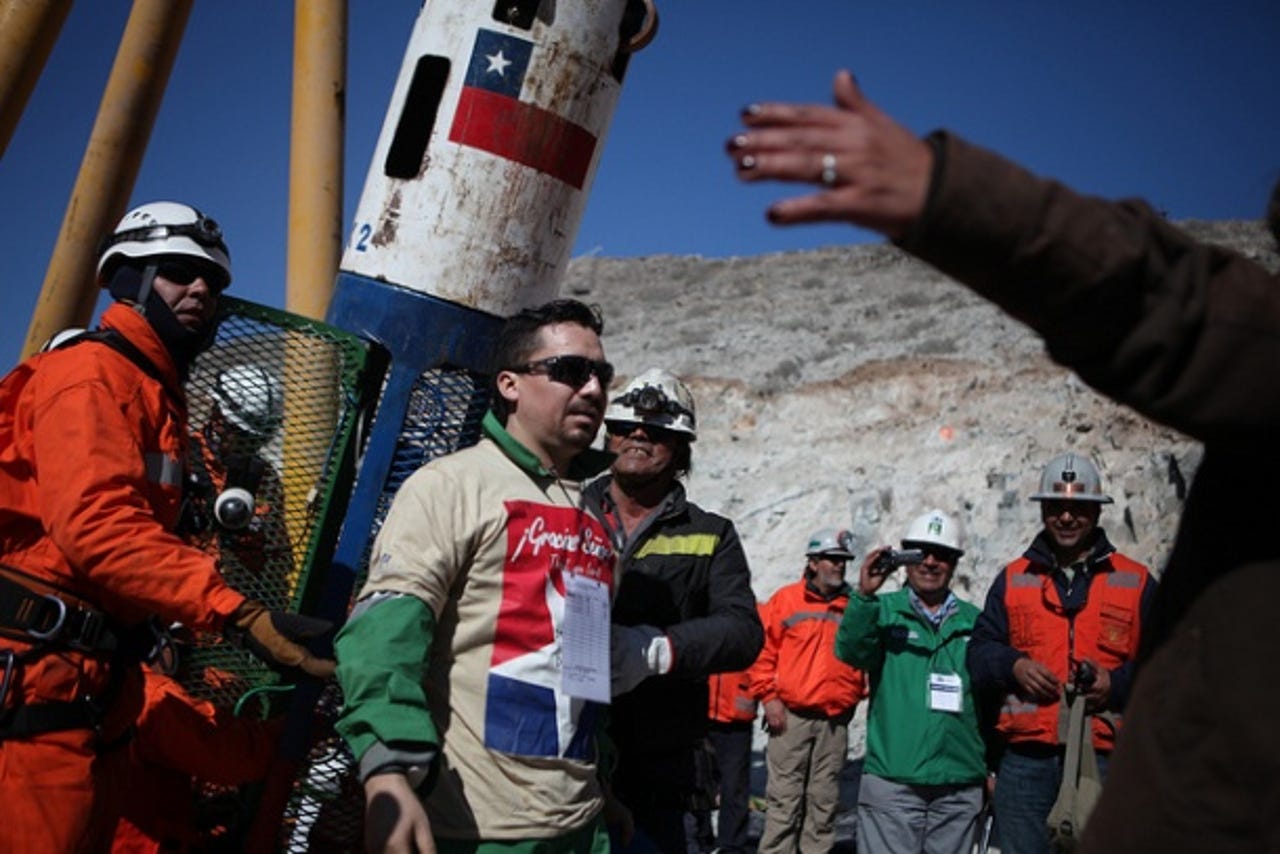Chilean miners saved by leaky feeder

One of the most striking aspects of the Chilean mining disaster was that the trapped workers were quickly in communication with the surface, even though they were close to a kilometre underground.
Radio doesn't work through the ground - at least, not the sort that's any good for talking in real time. That means it's also not so hot through tunnels: it's OK if you've got line of sight, but curves and dips form shields that can block out the signal.
While there are some technologies that do push subterranean signals, they're not that useful. What most people use, and what the Chilean miners depend on, is a rather simple idea called a leaky feeder.

A radio's antenna system normally has two components, the bit of wire stuck in the air that radiates and receives signals, and the feeder. This is the equivalent of a hosepipe: because it's not normally convenient to have the radio gubbins in the same spot at which the antenna works best, you have to move the wanted signals in an isolated environment between the two.
A leaky feeder is both antenna and feeder. It's like a plant watering pipe and works in much the same way: holes in the shielding along the outside let signals leak in and out along its length, in effect creating a long line of small antennas that fill in all the locations nearby Lay your leaky feeder along a tunnel, no matter how twisty and narrow, and everywhere along the tunnel gets two-way radio. Or data, or television. Anything you can do with wireless, you can do over a leaky feeder.
The Chilean leaky feeder system has one extra innovation. Normally, there's a transmitter/receiver (a transceiver) at one end of the feeder and you use walkie-talkies along it to make contact. With the system used in the rescue, there are transceivers at both ends: that way, if there's a break along the way, the two ends can still talk to each other across the gap.
Leaky feeders have uses other than to keep miners chatting. If and when the London Underground gets mobile phone coverage in the tunnels, that will rely on the technology, and the lack of a decent system was one of the contributing factors to the problems faced by the emergency services in the 7/7 London bombings in 2005.
Also, because these systems have a short range away from the feeder and are often used in places shielded from the outside world, they can reuse spectrum that's already been allocated for other services. And they're also a great fit for mesh wireless, where individual transceivers pick up and retransmit signals from their neighbours, to boost range and throughput.
It's quite feasible that whatever final radio standard we end up using globally to achieve the dream of gigabits everywhere, leaky feeders will be an essential part of creating or linking pools of otherwise unreachable space together. Not a bad destiny for a technology that few have heard of, and fewer — other than those 700 metres below the Atacama desert — appreciate.